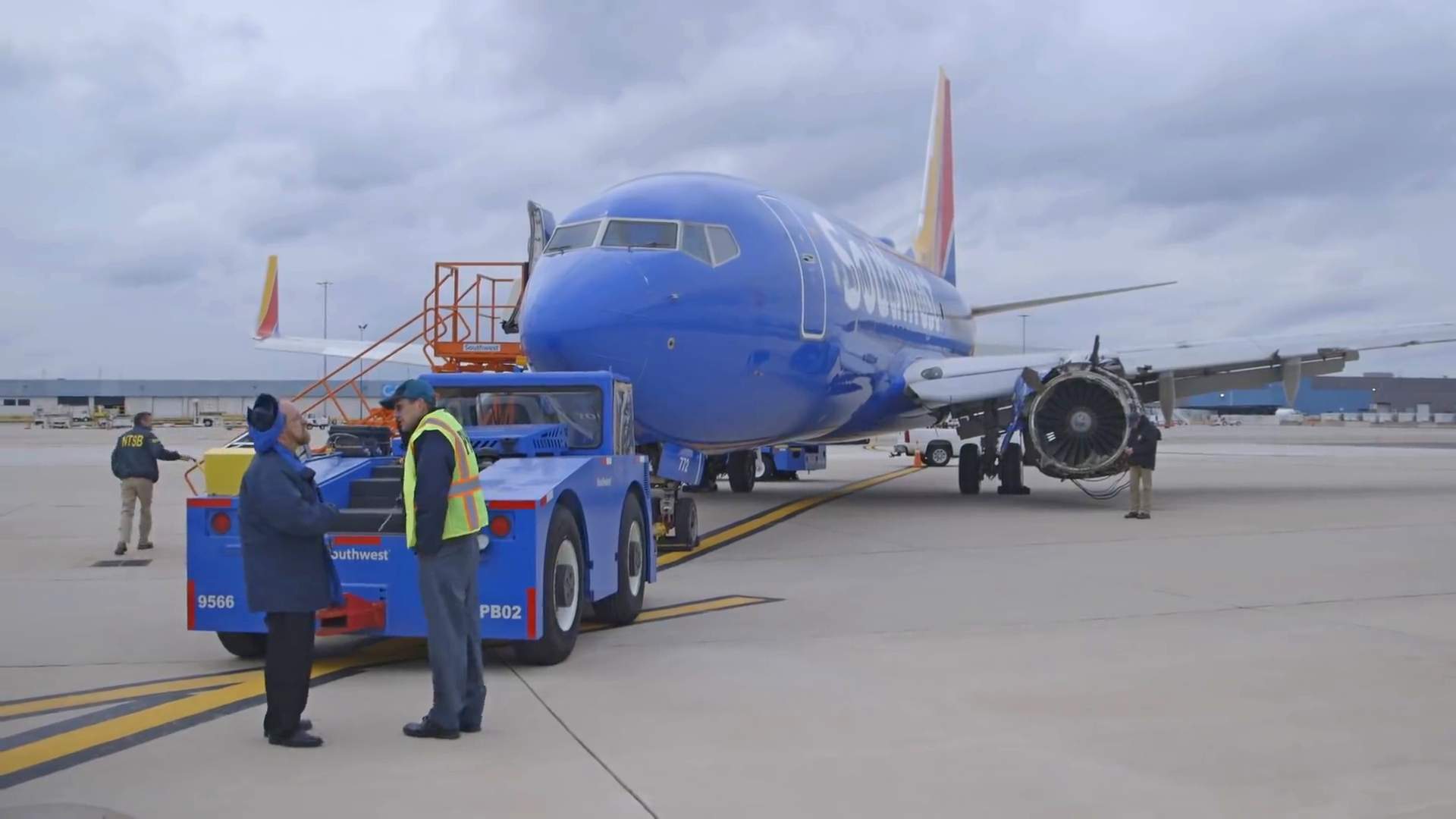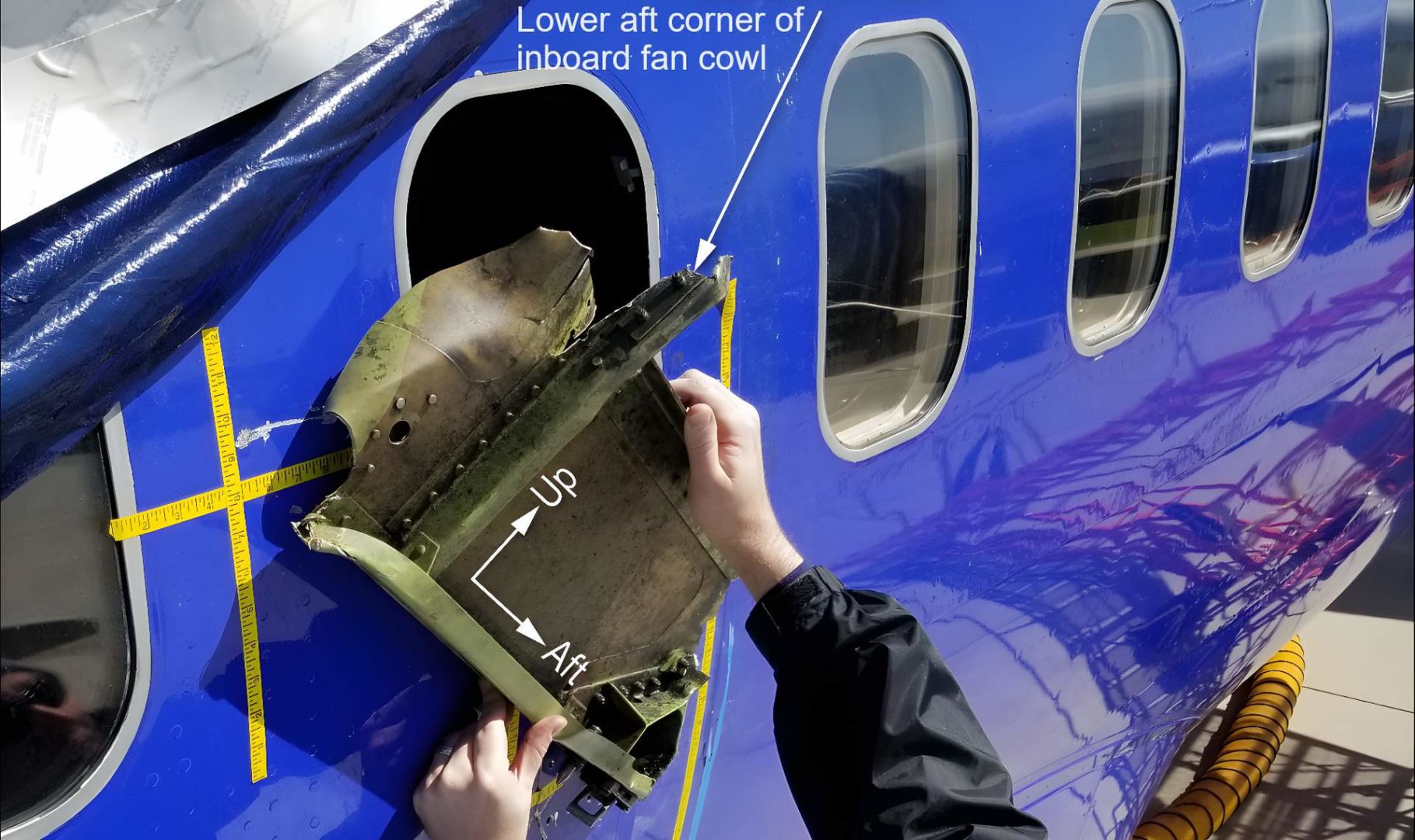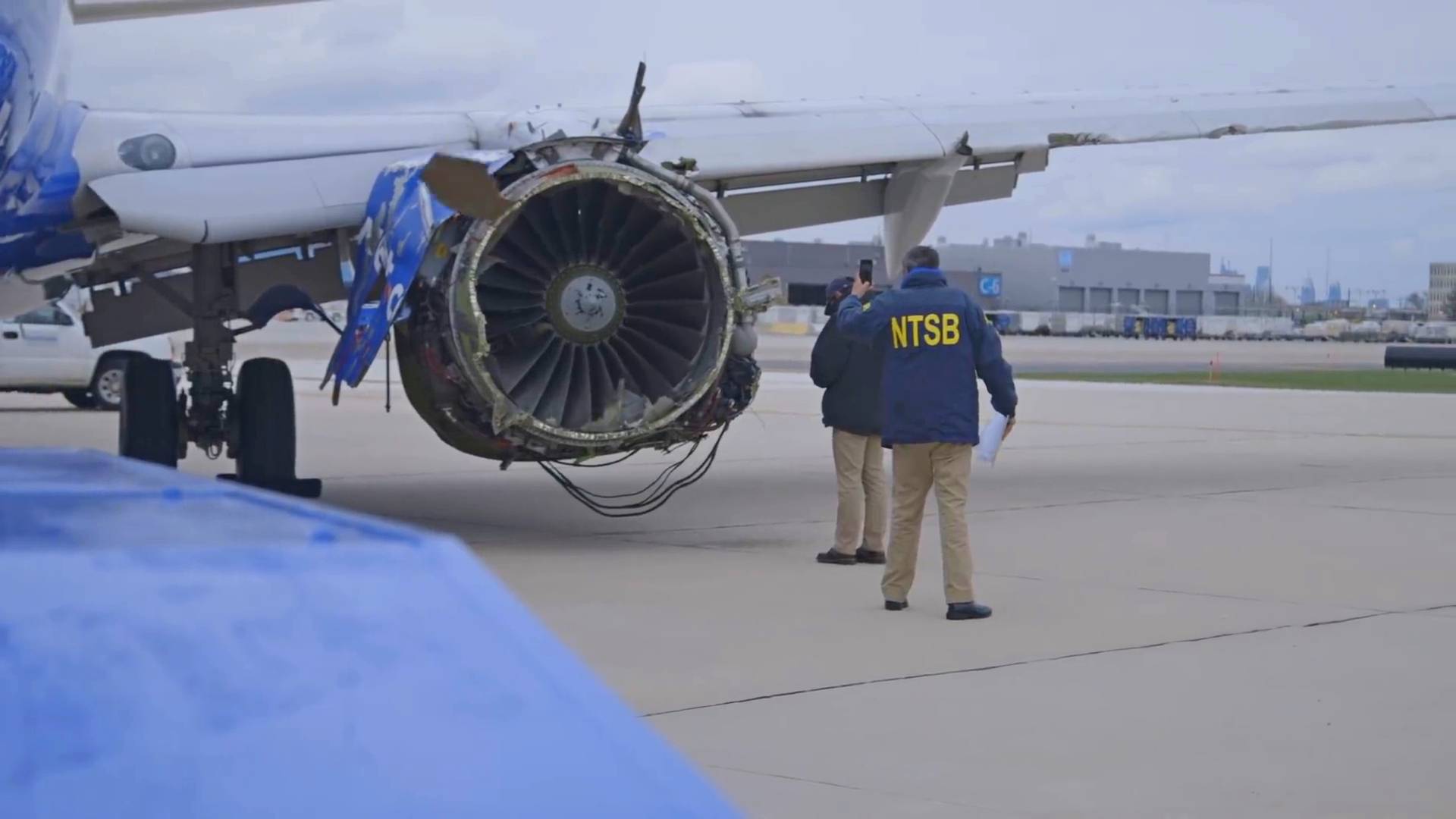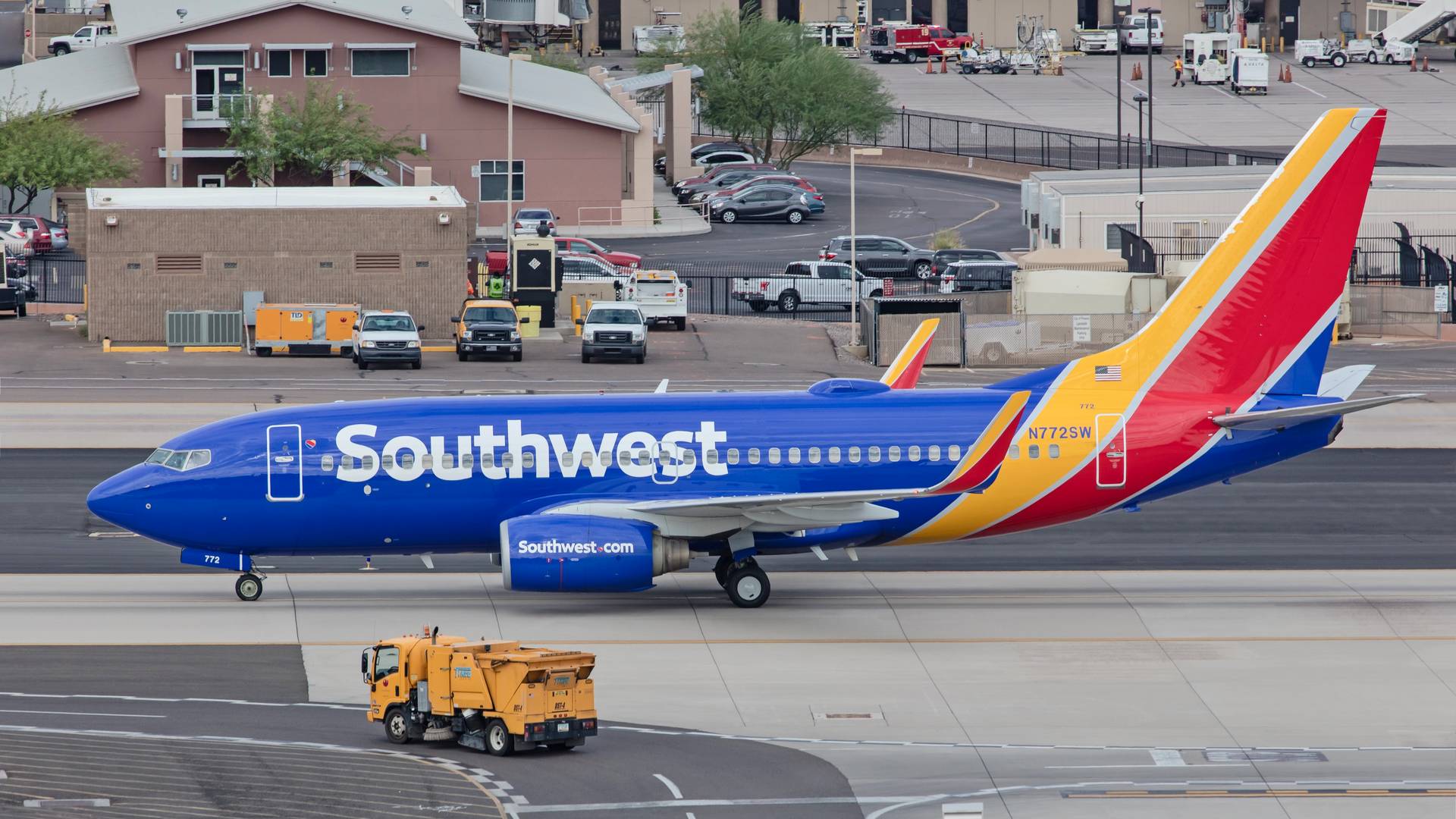The FAA is proposing three Airworthiness Directives affecting Boeing’s 737NG family, as a result of the accident of Southwest Flight 1380.
This accident happened back in April of 2018. Flight 1380 was a Southwest Boeing 737-700, departing from La Guardia Airport in New York City. Its destination was Dallas Love Field in Texas. There were 144 passengers and 5 crew on board.

Approximately 20 minutes into the flight, a fan blade in the number one (left) engine suffered a fracture. This, in turn, caused more damage around the inlet cowl and other parts of the engine’s structure and installation.
One of these parts hit the fuselage, breaking a passenger window, and causing a cabin decompression. The aircraft was climbing through FL320 at the time. The crew diverted to Philadelphia, where they landed safely.

Tragically, a passenger on Southwest flight 1380 perished, when she was partially pulled through the window. This was the first fatality in a commercial flight in the United States since the 2009 Colgan Air 3407 crash. Seven other passengers suffered minor injuries but didn’t require a visit to the hospital.
Southwest Flight 1380 – The Lessons Learned
After the Southwest 1380 accident, Boeing issued a number of service bulletins, which introduced modifications and inspections to the engine inlet cowl, fan cowl, and exhaust nozzle. These proposed changes are affecting 1,979 737s in the United States and 6,666 of them worldwide.

However, Service Bulletins aren’t mandatory. Under the FAA’s latest proposal, these SBs will become Airworthiness Directives, which are mandatory. The airlines operating these jets have until July 2028 to comply.
Note that just days after the Southwest 1380 accident, the FAA, EASA, and other aviation authorities released Airworthiness Directives covering the fracture of the fan blade. These ADs specified ultrasonic inspections and were much more urgent. Airlines had to comply with them within 9 months.

Those ADs as well as the latest changes only affect the Boeing 737NG family, NOT the newer 737 MAX, which has a different engine. The 737-700 in the Southwest Flight 1380 accident had CFM56-7B24 engines. Many legacy Airbus A320 (ceo) aircraft also use the CFM56.
But these Airbuses have a different version of this engine, which has a different fan, cowling, and other ancillary components. The CFM56 is the world’s most widely produced jet engine, with other versions powering some Airbus A340s and many military KC-135s and 707 derivatives.

The Southwest aircraft involved in the Flight 1380 accident hasn’t returned to service. Today, the 737-700 with tail number N772SW is in storage at Victorville Southern California Logistics airport. It is 23 years old.
Check out this MentourPilot video and analysis of this accident, below (or at THIS LINK):




3 comments
Zelin
Thank you for always keeping us updated!
geoffrey nicholson
So FAA have taken over 5 years to issue these ADs and are allowing nearly 5 years for them to be implemented.
Are Boeing still leaning on the FAA?
Mihael “Miki” Mutić
FAA being awesome as always.